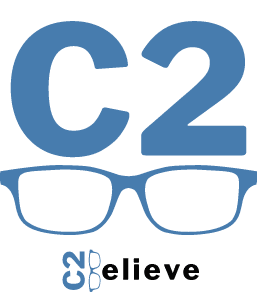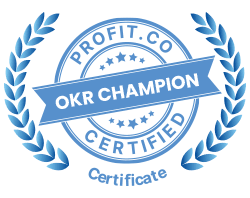🎧 Listen and follow
Introduction
Convergent Management in Taiwan – Lean Six Sigma, OKR, Agile Scrum
Lean Six Sigma is an extraordinary framework for precision, efficient, high-output, low-defect manufacturing. It has helped make Taiwan a formidable player in technology industries.
However, other aspects of business operations, General Management, Sales, Marketing, and even Software Programming have lagged behind and often present challenges in alignment, coordination, collaboration, direction and even growth.
Enter OKR (Objectives and Key Results) and Agile Scrum – they are complimentary methodologies to Six Sigma that have gained significant notoriety worldwide and it’s no surprise why – they with Six Sigma share distinct similarities, which we will explore.
New to OKRs, see “What is OKR?”
Quick Refresher – Lean Six Sigma, OKR, Scrum
Technology and manufacturing are pillars of Taiwan’s economic landscape, driving innovation across global industries. To manage these fast-evolving sectors, organizations adopt different methodologies tailored to their operational needs.
- In manufacturing, Taiwan has embraced Lean Six Sigma, a proven framework for precision, efficiency, and continuous improvement.
- In software and hardware engineering, the adoption of Agile Scrum is gaining momentum, reshaping how Taiwanese teams collaborate and iterate in fast-paced environments.
- And while OKRs (Objectives and Key Results) have become the go-to system for strategic goal-setting around the world, their uptake in Taiwan has been more gradual.
Uncanny in similarities.
At first glance, OKRs, Scrum, and Lean Six Sigma might seem designed to solve entirely different problems—strategic alignment, agile development, and process optimization, respectively. Yet as we observe how these frameworks are applied in modern organizations, an uncanny truth emerges: they share foundational design principles:
- Progress tracking
- Agile responsiveness
- Iterative learning
- Continuous improvement
- Cross Functional Collaboration
- Goal oriented – Outcome based
- Operating cadence
It’s not coincidence—it’s convergence. These aren’t just methodologies; they’re expressions of deep-rooted managerial truths that transcend their original domains.

🔄 Progress-Based Precision
Progress tracking refers to the ability to measure forward momentum with clarity and confidence. It’s about defining goals in quantifiable terms—and knowing exactly where you stand in relation to them.
OKRs use Key Results: specific, measurable indicators tied to strategic objectives. Scrum applies sprints and daily stand-ups to track incremental goal achievement. Lean Six Sigma delivers statistical precision and process metrics, from DPMO to takt time and throughput. All three root execution in evidence—not intuition.

🚀 Agile by Nature
Agile responsiveness is the ability to pivot quickly—without losing clarity or control. When conditions shift, adaptive systems empower teams to change direction with confidence.
OKRs offer quarterly cycles and flexibility in key results. Scrum thrives on iterative backlog refinement and sprint reviews. Lean Six Sigma introduces pull-based workflows, Just-In-Time production, and Rapid Improvement Events—making change both fast and thoughtful.
Also see “OKR is an Agile Management Framework”。

🔁 Iterative Thinking
Iterative learning means advancing in cycles: testing, learning, adjusting, and repeating. It’s not about chasing perfection, but evolving consistently.
OKRs reset objectives and refine results in regular reviews. Scrum’s sprint rhythm builds cumulative progress with each cycle. Lean Six Sigma embraces iteration through Kaizen and DMAIC—delivering insights step by step as teams define, measure, and improve.

🧪 Continuous Improvement
Continuous improvement is a cultural mindset—always asking how things can be made better. It champions problem-solving, reflection, and forward motion.
OKRs enable refinement through feedback loops and realignment. Scrum formalizes team evolution with retrospectives. Lean Six Sigma institutionalizes Kaizen, root cause analysis, and control charts to build excellence from the ground up.

🌐 Cross-Functional Collaboration
Cross-functional collaboration breaks silos—it blends expertise to generate better solutions.
OKRs inspire alignment across departments. Scrum assembles diverse delivery teams. Lean Six Sigma builds multifunctional project teams—bringing operations, analytics, and engineering together to solve system-wide challenges.
Also see “OKR vs Departmental Conflict”。

🎯 Goal Oriented – Outcome Over Activity
Outcome orientation shifts the focus from busyness to effectiveness. What matters isn’t motion—it’s impact.
OKRs aim for business transformation through clear goals. Scrum tracks velocity and working product increments. Lean Six Sigma strips away non-value-added tasks, zeroing in on customer satisfaction and measurable performance. Purpose eclipses activity.

Conclusion: Shared Wisdom, Natural Evolution
Lean Six Sigma has long served as a cornerstone of manufacturing—its efficiency, precision, and improvement ethos have shaped Taiwan’s industrial success stories.
We can learn from the Six Sigma model, and use similar ideologies for different business applications – These are OKR as a goal-oriented framework to guide corporate strategy and Agile Scrum to streamline and keep development projects on track..

When you apply these convergent management methodologies together, they establish a culture of progress tracking, agility, iteration, rhythm, and relentless refinement to all areas of business, making companies well-run from top-to-bottom.
It’s is more than a passing trend—it’s a natural evolution. The convergence of these frameworks is already unfolding across shop floors, design labs, and boardrooms, shaping the future of Taiwan’s business leadership through thoughtful, modular, and adaptive excellence.
| Principle | Defiinition | OKR | Scrum | Lean Six Sigma |
| 🔄 Progress-Based Precision | Tracking meaningful, measurable forward movement aligned to value and outcomes. | Key Results drive strategic progress | Sprints and stand-ups measure short-term progress | Metrics like DPMO, takt time, and throughput track process flow and quality |
| 🚀 Agile Responsiveness | Adapting quickly to change with clarity and confidence | Quarterly cycles allow real-time recalibration | Backlog refinement and sprint reviews enable flexibility | Pull systems, Just-In-Time, and Rapid Improvement Events drive adaptive change |
| 🔁 Iterative Thinking | Advancing in cycles—test, learn, adjust, repeat. | Check-ins and key result updates build momentum | Sprint cycles repeat with learning-driven adjustments | Kaizen events and DMAIC loops foster incremental improvement |
| 🧪 Continuous Improvement | Building a culture that seeks ongoing refinement and excellence. | Feedback loops refine goals and execution | Retrospectives guide team and process evolution | Kaizen, root cause analysis, and control plans drive excellence |
| ⏱ Cadence and Rhythm | Establishing structured tempo for execution, alignment, and review. | Monthly/quarterly cycles align strategy and action | Stand-ups, sprint rituals, and retrospectives define rhyth | Daily management, visual boards, and staged processes set operational tempo |
| 🧠 Role Clarity & Accountability | Defining responsibilities to empower confident, autonomous execution. | Owners and contributors manage objectives | Scrum Master, Product Owner, Dev Team roles are distinct | Team Leaders, Belts, and operators own execution and improvement accountability |
| 🌐 Cross-Functional Collaboration | Breaking silos and blending expertise to solve problems holistically. | Encourages goal alignment across departments | Diverse delivery teams integrate multiple disciplines | Value stream teams blend ops, analytics, and engineering for systemic change |
| 🎯 Outcome Over Activity | Prioritizing results and impact over busyness or effort. | Objectives focus on strategic impact | Sprints deliver working product increments | Value-added analysis filters out waste; focus remains on customer satisfaction |
Look who’s using OKRs.











0 Comments